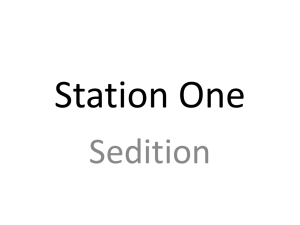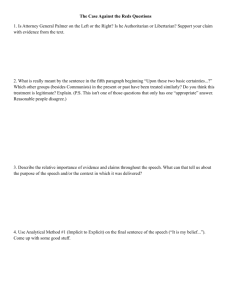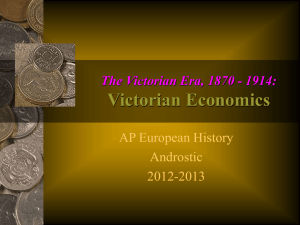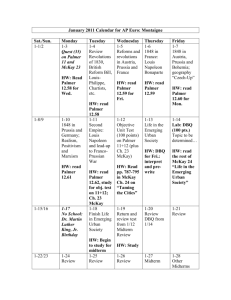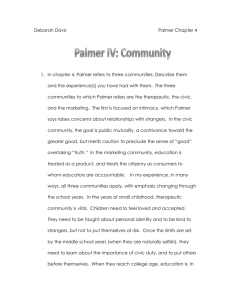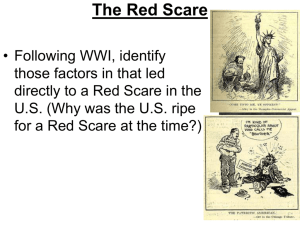Document 10884929
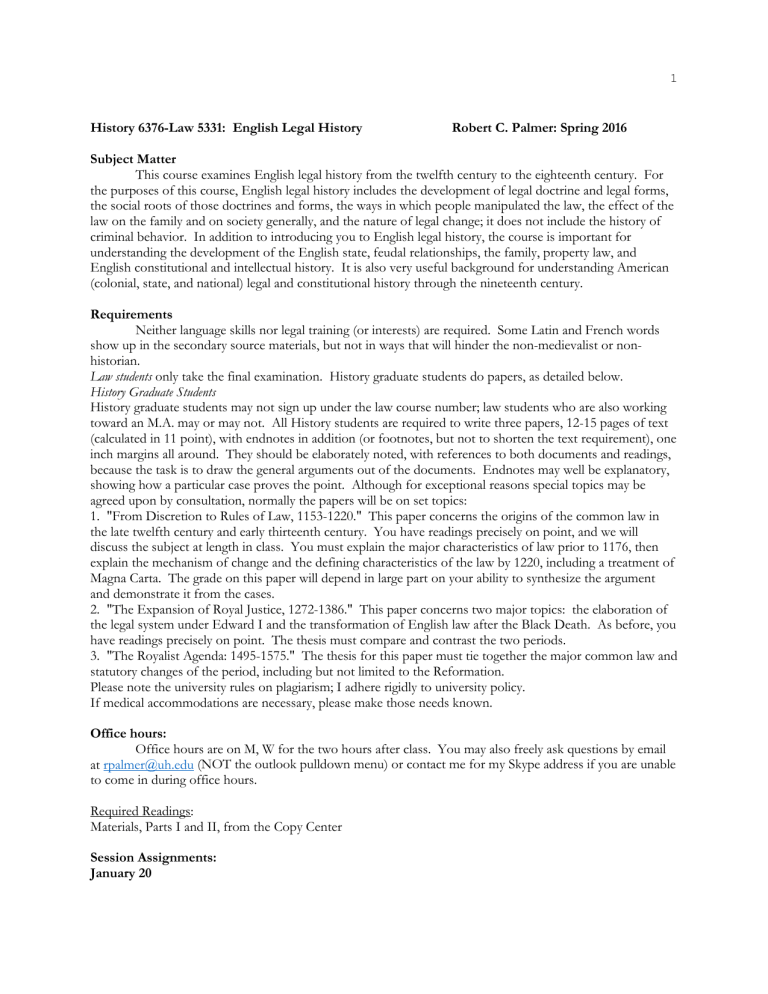
1
History 6376-Law 5331: English Legal History
Subject Matter
Robert C. Palmer: Spring 2016
This course examines English legal history from the twelfth century to the eighteenth century. For the purposes of this course, English legal history includes the development of legal doctrine and legal forms, the social roots of those doctrines and forms, the ways in which people manipulated the law, the effect of the law on the family and on society generally, and the nature of legal change; it does not include the history of criminal behavior. In addition to introducing you to English legal history, the course is important for understanding the development of the English state, feudal relationships, the family, property law, and
English constitutional and intellectual history. It is also very useful background for understanding American
(colonial, state, and national) legal and constitutional history through the nineteenth century.
Requirements
Neither language skills nor legal training (or interests) are required. Some Latin and French words show up in the secondary source materials, but not in ways that will hinder the non-medievalist or nonhistorian.
Law students only take the final examination. History graduate students do papers, as detailed below.
History Graduate Students
History graduate students may not sign up under the law course number; law students who are also working toward an M.A. may or may not. All History students are required to write three papers, 12-15 pages of text
(calculated in 11 point), with endnotes in addition (or footnotes, but not to shorten the text requirement), one inch margins all around. They should be elaborately noted, with references to both documents and readings, because the task is to draw the general arguments out of the documents. Endnotes may well be explanatory, showing how a particular case proves the point. Although for exceptional reasons special topics may be agreed upon by consultation, normally the papers will be on set topics:
1. "From Discretion to Rules of Law, 1153-1220." This paper concerns the origins of the common law in the late twelfth century and early thirteenth century. You have readings precisely on point, and we will discuss the subject at length in class. You must explain the major characteristics of law prior to 1176, then explain the mechanism of change and the defining characteristics of the law by 1220, including a treatment of
Magna Carta. The grade on this paper will depend in large part on your ability to synthesize the argument and demonstrate it from the cases.
2. "The Expansion of Royal Justice, 1272-1386." This paper concerns two major topics: the elaboration of the legal system under Edward I and the transformation of English law after the Black Death. As before, you have readings precisely on point. The thesis must compare and contrast the two periods.
3. "The Royalist Agenda: 1495-1575." The thesis for this paper must tie together the major common law and statutory changes of the period, including but not limited to the Reformation.
Please note the university rules on plagiarism; I adhere rigidly to university policy.
If medical accommodations are necessary, please make those needs known.
Office hours:
Office hours are on M, W for the two hours after class. You may also freely ask questions by email at rpalmer@uh.edu
(NOT the outlook pulldown menu) or contact me for my Skype address if you are unable to come in during office hours.
Required Readings:
Materials, Parts I and II, from the Copy Center
Session Assignments:
January 20
2
Introduction
( a) Materials, Pt. 1, Section I: "General Material," pp. 1-8.*
Before the Common Law: Feudal Relationships and Family
(b) Robert C. Palmer, "The Feudal Framework of English Law"
Michigan Law Review vol. 79 (1981), pp. 1130-40 (in Materials, Pt 2).
This article sets out the basic differences between a Maitland and a Milsom approach. You must understand the difference. Note that I have now diminished, but not eliminated, the emphasis here on the compromise of 1153. That analysis remains important, but is slightly different from that you will find in class.
(c)Materials, Pt. 1, Section II: “The Nature of Courts and the Law before 1176,” pp. 9-26
January 25
The First Era of Change (1176-1200): The Origins of Property
((a) Robert C. Palmer, "The Origins of Property in England." Law and History Review, vol. 3 (1985), pp. 1-8 (in Materials, Pt 2). (The analysis here should track, almost exactly, the analysis in class, although I have now added some additional work on the origins of the grand assize in 1179.)
(b) Materials, Pt. 1, Section IV: “The Origins of the Common Law, Part One,” pp. 26-32
(c) Materials, Pt. 1, Section V: “The First Major Transition,” pp. 32-38
(d) Materials, Pt. 1, Section VI: “The Early Structure of Tenurial Rights: Glanvill,” pp. 38-50
(e) Robert C. Palmer, "The Origins of Property in England." Law and History Review, vol. 3 (1985), pp. 8-50 (in Materials, Pt 2).
February 1
(a) Materials, Pt 1, Section VII: Women and the Law: Dower,” pp. 50-53
(b) Materials, Pt. 1, Section VIII: “Rules of Law,” pp. 53-59
(c) Materials, Pt. 1, Section IX: “The Assize of Novel Disseisin and the Origins of Property,” pp. 59-
62
February 8
(a) Materials, Pt. 1, Section X: “Entry and Property Right,” pp. 62-64
(b) Materials: Pt. 1, Section XI, “The Writs of Entry,” pp. 64-72.
(c) Robert C. Palmer, "The Economic and Cultural Impact of the Origins of Property, 1180-1220."
Law and History Review, vol. 3 (1985), pp. 375-96 (in Materials, Pt 2).
(d) Materials: Pt. 1, Section XII, “Magna Carta,”, pp. 72-76; “Parliament,” pp. 76-77; and “Extension of Property Law,” pp. 77-79.
February 15
(a) Materials, Pt. 1, Section XIII: “Elemental Legal Categories in the English Legal Tradition,” pp.
79-89
(b) Robert C. Palmer, "Conscience and the Law: the English Criminal Trial Jury." Michigan Law
Review vol. 84 (1986), pp. 787-800 (Materials, Pt. 2).
(c) Materials, Pt. 1, Section XIV: “The First Legal System,” pp. 89-106 IN COMBINATION
WITH
(d) Robert C. Palmer, The Whilton Dispute (Princeton, 1984), pp. 1-86. (In Materials, Pt. 2)
February 22
(a) Materials, Pt. 1, Section XV: “The Writs of Entry,” pp. 106-115 (just through XIVA)
(b) Palmer, The Whilton Dispute, pp. 87-151
(c) Materials, Pt. 1, Section XVI, “The Statutes of Edward I,” pp.115-124
3
Feb 29
(d) Palmer, The Whilton Dispute, pp. 152-191
(e) Materials, Pt. 1, Section XVII: “Miscellany: Evidence, Lawyers, Marriage,” pp. 144-157
(a) Materials, Pt. 1, Section XVIII [Debt], pp. 133-140
(b) Materials, Pt. 1, Section XIX: “Detinue,” pp. 140-144
(c) Materials, Pt. 1, Section XX: “Covenant,” [with a single report on crime], pp. 144-152
(d) Robert C. Palmer, "Covenant, Justicies Writs, and Reasonable Showings." American Journal of
Legal History, vol. 31 (1987), pp. 97-117. (In Materials, Pt. 2)
This article is useful (a) for the short presentation of the development of the 40s rule and the specialty rule and (b) for giving you at least an appreciation that there are other views.
March 7
(a) Materials, Pt. 1, Section XXI: “Trespass,” pp. 152-163
(b) Materials, Pt. 1, Section XXII: “The Second Legal System,” pp. 163-165
(c)Materials, Pt. 1, Section XXIII: “Uses and Equity,”165-175
(d) Palmer, The Whilton Dispute, pp. 192-220
(e) Materials, Pt. 1, Section XXIV: “Trespass: vi et armis as a test,” pp. 175-183
March 21
(a) Materials, Pt. 1, Section XXV: “Personal Actions after the Black Death,” pp. 183-193
(b) Materials, Pt. 1, Section XXVI: “The Legislation of 1351-53,” pp. 193-205
(c) Palmer English Law in the Age of the Black Death , c. 7: “The Written Contract” (in Materials, Pt. 2
(next to last piece)
March 28
(a) Materials, Pt. 1, Section XXVII: “Trespass on the Case,” pp. 205-212
(b) Materials, Pt. 1, Section XXVIII: “The Nation,” pp. 212-220
April 4
April 11
(a) Materials, Pt. 1, Section XXIX: “Third Legal System: The Reformation and Royal Power,” pp.
220-235
(b) Materials, Pt. 1, Section XXX: “Property Law and the Reformation,” pp. 235-241
April 18
(a) Materials, Pt. 1, Section XXXI: “Indebitatus Assumpsit,” pp. 241-256
(b) Materials, Pt. 1, Section XXXII, “Ejectment,” pp. 256-264
The Development of Civil Rights at Law
(c) Materials, Pt. 1, Section XXXIII: “Rights,” pp. 264-271
April 25
(a) Materials, Pt. 1, Section XXXIV: “The Courts and Rights: Coke,” pp. 271-280
(b) Materials, Pt. 1, Section XXXV: “Parliament and Rights,” pp. 280-286
Materials, Pt. 1, Section XXXV (again): “Parliamentary Sovereignty,” pp. 286-294

